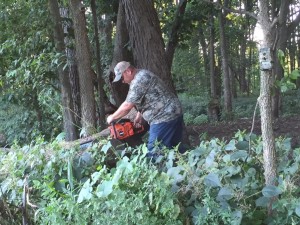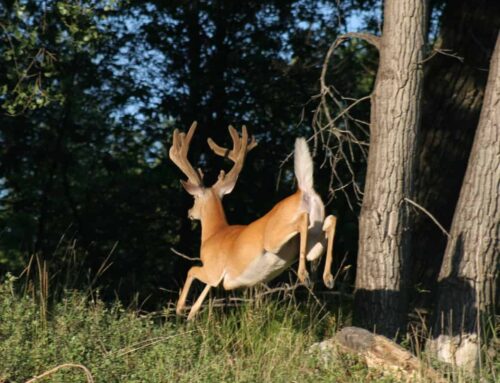 In any given year, spring/summer weather conditions—either drought or flood—can delay or in some way impact planting and seed germination. The conditions keep soybeans, corn, alfalfa and the like from producing throughout the growing season, and in turn deer do not pack on as much weight, or in the case of bucks grow their largest antlers.
In any given year, spring/summer weather conditions—either drought or flood—can delay or in some way impact planting and seed germination. The conditions keep soybeans, corn, alfalfa and the like from producing throughout the growing season, and in turn deer do not pack on as much weight, or in the case of bucks grow their largest antlers.
Each week that quality forage is not able to grow and mature (it’s either too dry or too wet) it reduces a deer’s ability to express its full genetic potential. The lack of ag crops can be buffered by quality native forage for deer. But then poor weather conditions can impact the growth and availability of forbs, woodland plants and other natural food sources.
As any good farmer knows, floods and drought cannot be predicted from year to year. If you farm (manage) your land for wild deer, the best you can do is establish a 2-pronged plan that accounts for variable weather conditions.
First, whether you own and hunt 50 acres or 500, cut, mow, clear and plant your property to create a very diverse edge-type habitat that will provide a variety of food sources for deer no matter the spring/summer weather conditions—several crops, clover, brassicas, native plants, acorns, etc.
Secondly, plan on shooting enough deer (especially enough does in many areas) every season to maintain a deer herd’s numbers slightly below the amount of food and cover that will be available to the animals during the tough years of drought, excessive flooding, harsh winter, etc.
All deer herds do well during normal weather years with good growing conditions, but those weather patterns are unpredictable. By maintaining your habitat and deer numbers in a constant state of readiness for tough years, both the land and the herd will be extremely productive when environmental conditions are seasonal and better than average.






